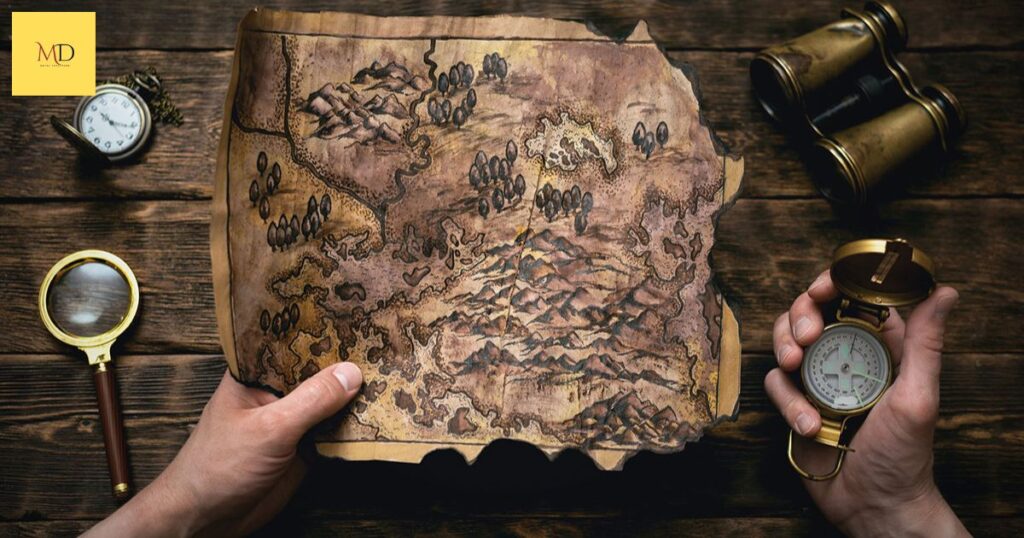Metal detectors are electronic devices that can detect the presence of metal objects. They work by generating a magnetic field and sensing disruptions caused by nearby metals. These devices are commonly used for security screening at airports, as well as in hobbyist treasure hunting. Metal detectors are designed to alert users with an audible or visual signal when metal is detected.
Have you ever wondered how deep metal detectors can really go? Whether you’re an aspiring treasure hunter or just curious about this technology, understanding How Deep Metal Detectors Detect’ is key to unlocking their full potential. Discover the secrets behind their depth capabilities and take your metal detecting skills to new depths.
The depth at which metal detectors can detect objects varies depending on factors like the type of metal, soil composition, and the detector’s technology. In general, most entry-level metal detectors can locate objects buried up to 6-8 inches deep, while advanced models can detect targets at much greater depths, sometimes reaching several feet below the surface.
Entry-Level Metal Detectors
Entry-level metal detectors are perfect for beginners who are just getting started with treasure hunting or metal detecting as a hobby. These detectors are designed to be user-friendly and often come with preset settings, making them easy to operate. While they may have limitations in terms of depth detection and advanced features, they are an excellent choice for those on a budget or seeking a straightforward introduction to the world of metal detecting.
These detectors are also relatively lightweight and portable, making them convenient for outdoor adventures. They are a great option for children and families looking for a fun and educational pastime, as they provide an opportunity to explore the outdoors while searching for hidden treasures. While entry-level metal detectors may not have the advanced capabilities of higher-end models, they can be a gateway to a rewarding and enjoyable hobby for many enthusiasts.
Advanced Metal Detectors
Advanced metal detectors represent the pinnacle of detection technology, offering a range of features and capabilities that set them apart from their more basic counterparts. These detectors are equipped with cutting-edge technology, such as multiple operating frequencies, digital signal processing, and advanced discrimination settings, which significantly enhance their ability to detect and identify a variety of targets. With increased sensitivity and superior ground balancing.
Furthermore, advanced metal detectors often provide users with customizable settings and display options, giving them greater control over their detecting experience. The ability to fine-tune these detectors allows users to focus on specific types of targets while minimizing false signals and interference. Whether searching for buried treasure, relics, or hidden archaeological finds, advanced metal detectors offer a powerful and versatile tool that can unlock a world of hidden treasures, making them an essential choice for enthusiasts and professionals alike.
Real-Life Scenarios
Real-life scenarios are an essential aspect of understanding metal detector depth capabilities. These scenarios provide valuable insights into how various factors, such as soil composition, target size, and detector technology, interact to affect the actual detection depth. Exploring real-world situations can help metal detector enthusiasts and treasure hunters gain practical knowledge that goes beyond theoretical limits.
In these real-life scenarios, detectorists encounter challenges like hunting in different terrains, varying soil types, and searching for diverse metal objects. By sharing these experiences and their outcomes, users can learn what to expect in the field and how to adapt their strategies accordingly. Whether it’s finding hidden relics in a historical site or unearthing lost jewelry on a sandy beach, real-life scenarios offer a glimpse into the exciting and sometimes unpredictable world of metal detecting, where depth plays a crucial role in uncovering buried treasures.
Treasure Hunting Strategies

Treasure hunting strategies are the clever and systematic approaches used by enthusiasts to maximize their chances of finding valuable artifacts and hidden treasures. These strategies encompass a variety of techniques, from selecting the right metal detector for the job to conducting thorough research about potential search locations. Successful treasure hunters often emphasize the importance of understanding their equipment.
such as adjusting sensitivity settings and utilizing ground balancing techniques to adapt to specific conditions. Moreover, they rely on their knowledge of local history and geology, as well as employing smart search patterns to cover areas effectively. Treasure hunting strategies are a combination of science, experience, and intuition, making the quest for buried treasures an exciting and rewarding adventure.
Unveiling Metal Detector Depths
Unveiling Metal Detector Depths is a fascinating journey into the world of metal detection, where we uncover the mysteries of how deeply these devices can penetrate the ground to locate hidden treasures. The article dives into the essential concepts and factors that determine a metal detector’s depth capabilities, shedding light on the science behind these remarkable devices.
In this exploration, we will demystify the influence of soil conditions, target characteristics, and environmental factors on detection depth. We’ll also delve into the different types of metal detectors, from VLF (Very Low Frequency) to PI (Pulse Induction), to understand how each technology affects the ability to detect metals at various depths. By the end of this article, you’ll have a deeper appreciation for the intricate science and technology that make metal detectors such valuable tools for treasure hunters and enthusiasts alike.
The Science Behind Metal Detector Depth
The depth capabilities of a metal detector are closely linked to the science of electromagnetic fields and conductivity. When a metal detector is in use, it generates an electromagnetic field that penetrates the ground. When this field encounters a metal object, it induces an electrical current within the metal, creating a secondary magnetic field. This change in the electromagnetic field is what the metal detector senses, alerting the user to the presence of metal.
The ability to detect metal at greater depths is determined by the electrical conductivity of the target. In general, conductive metals like copper and silver can be detected at greater depths compared to less conductive metals like aluminum or iron. Understanding the science behind metal detector depth is crucial for users to make informed decisions about their equipment and to maximize their chances of finding buried treasures.
Electromagnetic Fields
Electromagnetic fields, often referred to as EMFs, are a fundamental aspect of the physical world. These fields are produced by the interaction of electric charges and are comprised of both electric and magnetic components. They can be found everywhere in our environment, generated by various sources such as power lines, electronic devices, and natural phenomena like lightning. Electromagnetic fields are a crucial concept in physics and technology, playing a central role in the functioning of devices like radios, cell phones, and even the Earth’s magnetic field, which protects us from harmful solar radiation.
Moreover, EMFs are a double-edged sword, as they serve as the foundation for many modern technologies while also raising concerns about potential health effects from prolonged exposure. While low-frequency EMFs from everyday devices are generally considered safe, high-frequency EMFs, like those emitted by certain types of radiation, are subject to more scrutiny. Researchers and regulatory bodies continue to study and evaluate the potential.
Conductivity and Target Identification
Conductivity and target identification are crucial elements in the science of metal detection. Conductivity refers to a material’s ability to carry an electrical current, and it plays a vital role in distinguishing different types of metals. When a metal detector’s coil emits an electromagnetic field, the target object’s conductivity affects how it responds. For instance, highly conductive metals like copper or silver typically produce strong signals and are easily identified.
Target identification, on the other hand, involves interpreting the signals received by the metal detector to determine the likely type of metal the object is made of. This identification process is often facilitated by the metal detector’s built-in technology, which may provide visual or audio cues to the user. By analyzing the conductivity and the characteristics of the signals, metal detectors can help users differentiate between valuable treasures and common metallic debris, allowing for more accurate and efficient searches during treasure hunting or security applications.
FAQ’S
What is the maximum depth of a metal detector?
The maximum depth of a metal detector can vary significantly depending on factors such as the type of metal detector, the technology it uses, and the conditions of the environment
How do you know how deep a metal detector can detect?
To determine how deep a metal detector can detect, you should refer to the manufacturer’s specifications and user manual.
How deep can a metal detector find gold?
The depth at which a metal detector can find gold depends on various factors, including the detector’s technology, the size and purity of the gold, and the soil composition.
Conclusion
In conclusion, the depth at which a metal detector can find gold is influenced by a multitude of factors. While advanced metal detectors with cutting-edge technology can potentially detect gold at impressive depths, it’s crucial to recognize that real-world conditions often lead to variations in detection depth. Soil composition, mineralization, and the size and purity of the gold itself all play a significant role in determining how deep a metal detector can reach.
Successful gold prospecting and treasure hunting require a nuanced understanding of these factors and the ability to adapt to changing conditions. By employing the right metal detector, adjusting sensitivity settings, and choosing appropriate coil sizes, users can optimize their chances of uncovering hidden treasures. Moreover, recognizing the impact of conductivity and target identification on the detection process can make all the difference in distinguishing valuable gold items from common metallic debris











